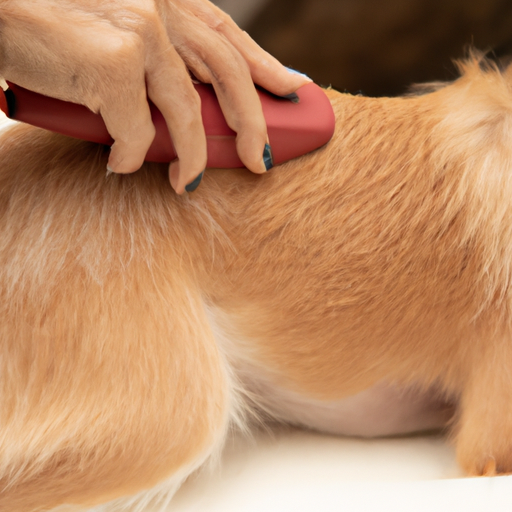Your beloved canine companion is scratching relentlessly, and you suspect the pesky flea might be the culprit. This comprehensive guide will provide you with the tools to effectively treat and prevent flea infestations in your furry friend.
1. Recognizing the Signs of a Flea Infestation
You may notice your dog scratching, biting, or licking their skin excessively. On closer inspection, you might find small, fast-moving brown insects in your dog’s fur, or ‘flea dirt’—the tiny, black droppings fleas leave behind.
- Scratching, biting, or licking: Fleas often gather around the neck, ears, tail, groin, or armpits of your dog.
- Flea dirt: To confirm if it’s flea dirt, place the black specks on a damp white paper towel. If they turn a reddish-brown color, it’s a sign of digested blood and hence, flea dirt.
2. Choosing the Right Flea Treatment
There are many flea treatments available, and the best one for your dog depends on several factors like their age, size, health, and lifestyle. The table below compares some common options:
| Treatment | Pros | Cons |
|---|---|---|
| Oral Medication | Fast-acting, kills adult fleas | Some dogs may experience side effects |
| Topical Treatments | Easy to apply, offers month-long protection | Can be washed off; some dogs may have skin reactions |
| Flea Collars | Long-lasting, convenient | May cause local irritation; not suitable for all dogs |
| Insecticidal Shampoos | Kills fleas on contact | Temporary relief; doesn’t prevent re-infestation |
3. Administering the Flea Treatment
Follow the manufacturer’s instructions carefully while treating your dog for fleas. If you’re using a topical treatment, part your dog’s fur and apply it directly onto their skin in the specified area. For oral medication, ensure your dog swallows the pill.
- Topical Treatment: Apply the treatment directly to your dog’s skin, not on the fur.
- Oral Medication: Make sure that the entire pill has been swallowed by your dog.
4. Preventing Future Flea Infestations
Prevention is better than cure. Regularly wash your dog’s bedding, vacuum the house, and use flea preventative products to keep fleas at bay.
- Regular Cleaning: Wash your dog’s bedding weekly and vacuum frequently.
- Preventive Products: Use flea collars, monthly topical treatments, or oral medications as preventive measures.
5. Consulting with a Veterinarian
Always consult your vet before starting any flea treatment. They can recommend the best and safest options based on your dog’s individual needs.
Frequently Asked Questions
1. Can fleas infest humans?
Yes, but they prefer animal hosts.
2. How long does it take to get rid of fleas?
It can take 2-3 months to fully eradicate a flea infestation.
3. Can I use dog flea treatment on my cat?
No. Some dog flea treatments can be toxic to cats. Always use species-specific treatments.
4. Can fleas survive in the cold?
Yes, fleas can survive in cold climates, but they prefer warm and humid environments.
Facing a flea infestation can be stressful, but with knowledge and the right tools, you can provide your dog with the relief they need. Remember, your vigilance is your dog’s best defense against these pesky parasites.



